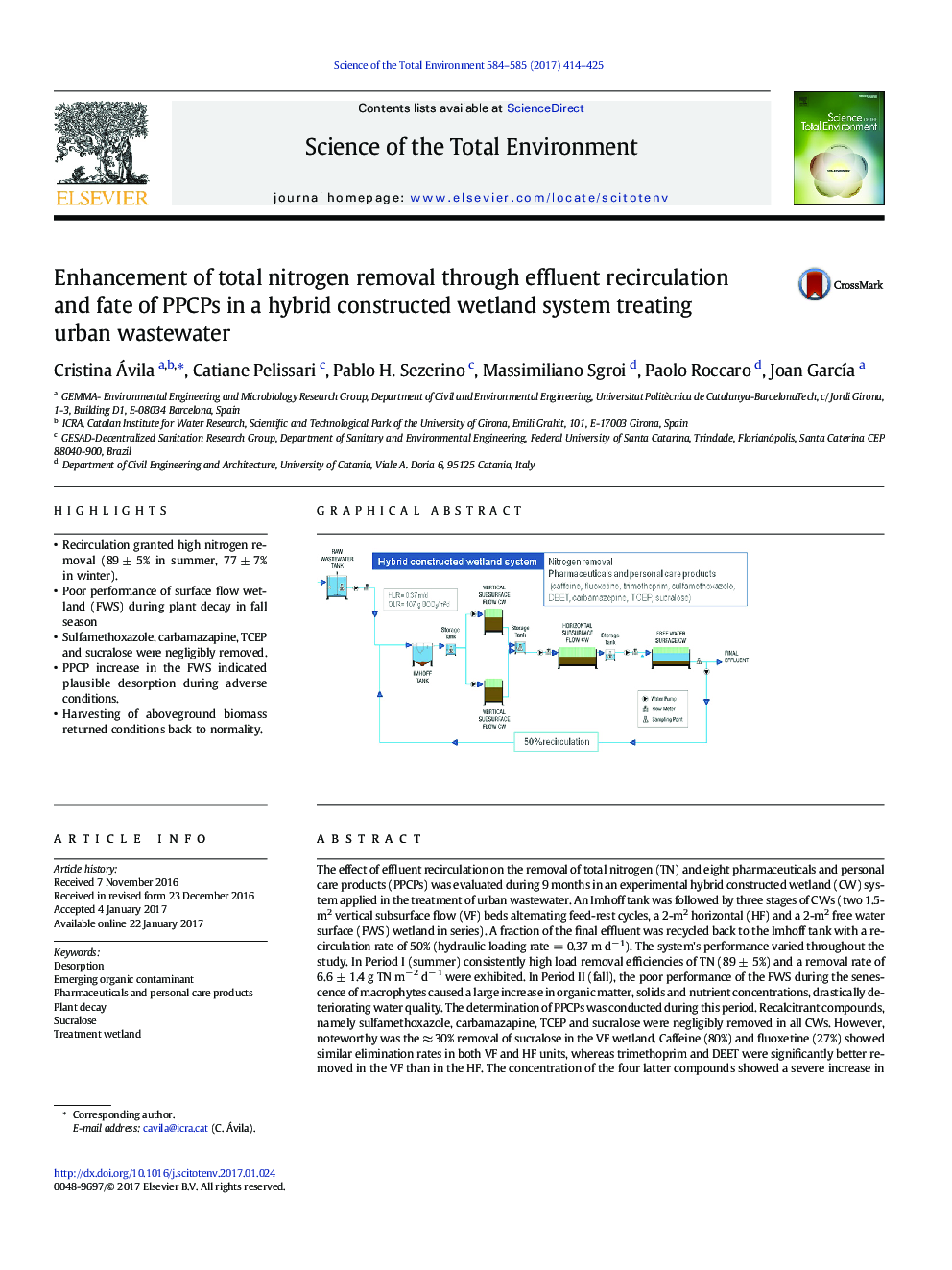| Article ID | Journal | Published Year | Pages | File Type |
|---|---|---|---|---|
| 5751883 | Science of The Total Environment | 2017 | 12 Pages |
â¢Recirculation granted high nitrogen removal (89 ± 5% in summer, 77 ± 7% in winter).â¢Poor performance of surface flow wetland (FWS) during plant decay in fall seasonâ¢Sulfamethoxazole, carbamazapine, TCEP and sucralose were negligibly removed.â¢PPCP increase in the FWS indicated plausible desorption during adverse conditions.â¢Harvesting of aboveground biomass returned conditions back to normality.
The effect of effluent recirculation on the removal of total nitrogen (TN) and eight pharmaceuticals and personal care products (PPCPs) was evaluated during 9 months in an experimental hybrid constructed wetland (CW) system applied in the treatment of urban wastewater. An Imhoff tank was followed by three stages of CWs (two 1.5-m2 vertical subsurface flow (VF) beds alternating feed-rest cycles, a 2-m2 horizontal (HF) and a 2-m2 free water surface (FWS) wetland in series). A fraction of the final effluent was recycled back to the Imhoff tank with a recirculation rate of 50% (hydraulic loading rate = 0.37 m dâ 1). The system's performance varied throughout the study. In Period I (summer) consistently high load removal efficiencies of TN (89 ± 5%) and a removal rate of 6.6 ± 1.4 g TN mâ 2 dâ 1 were exhibited. In Period II (fall), the poor performance of the FWS during the senescence of macrophytes caused a large increase in organic matter, solids and nutrient concentrations, drastically deteriorating water quality. The determination of PPCPs was conducted during this period. Recalcitrant compounds, namely sulfamethoxazole, carbamazapine, TCEP and sucralose were negligibly removed in all CWs. However, noteworthy was the â 30% removal of sucralose in the VF wetland. Caffeine (80%) and fluoxetine (27%) showed similar elimination rates in both VF and HF units, whereas trimethoprim and DEET were significantly better removed in the VF than in the HF. The concentration of the four latter compounds showed a severe increase in the FWS, indicating possible desorption from the sediment/biomass during adverse conditions. Harvesting of the aboveground biomass in this unit returned the system's performance back to normality (Period III), achieving 77 ± 7% TN removal despite the winter season, proving effluent recirculation as an effective strategy for TN removal in hybrid CW systems when stringent restrictions are in place.
Graphical abstractDownload high-res image (97KB)Download full-size image
